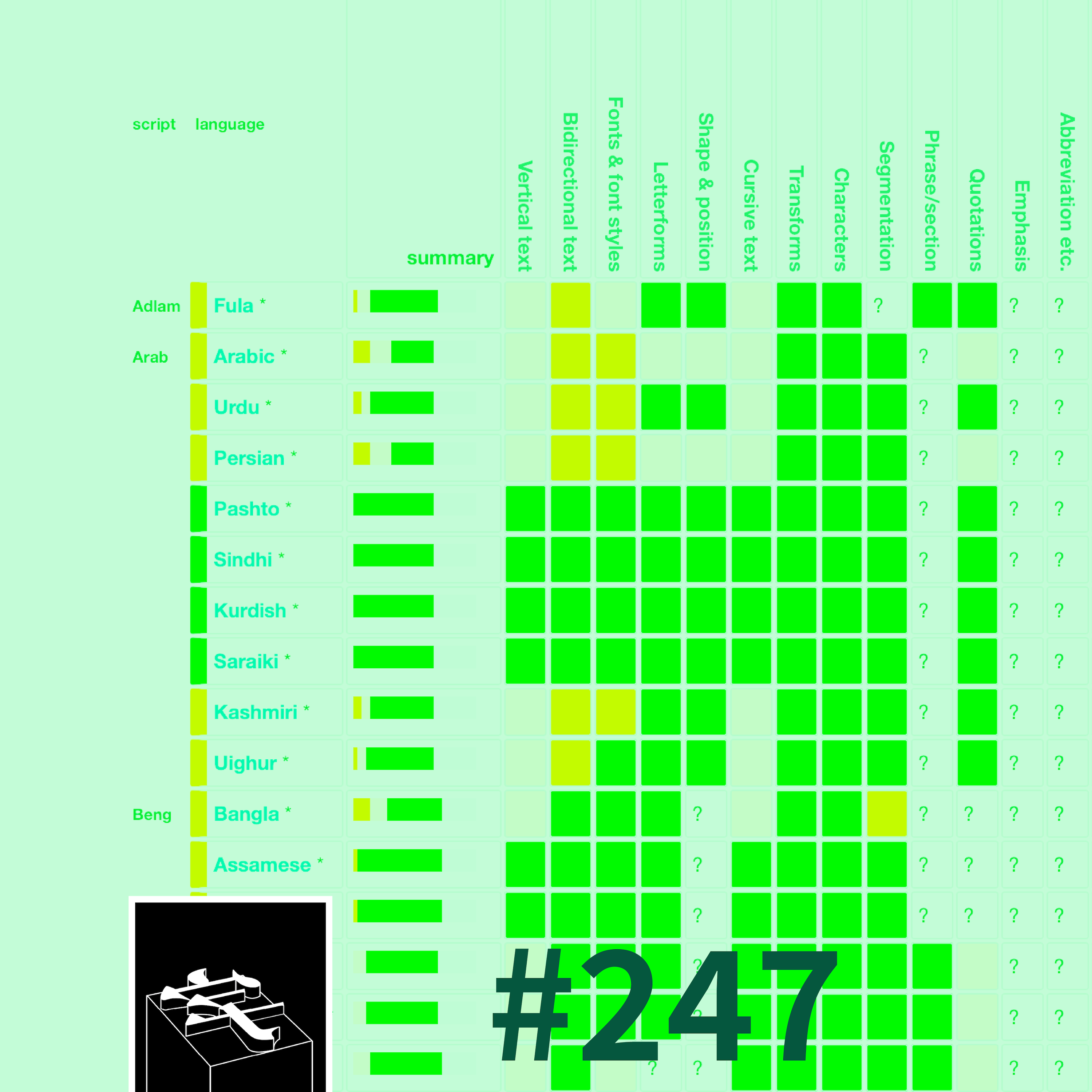
Deep Dive
What major changes were made to the Chinese Text Layout Requirements in the latest update?
The latest update to the Chinese Text Layout Requirements involved a significant structural overhaul. The new version aligns its structure with other language layout requirements, such as those for Arabic. This consistency aims to make it easier for standards and browser developers to understand and use the document, facilitating better cross-referencing and global typography advancements.
Why is the distinction between internationalization and localization important in web development?
Internationalization (i18n) involves designing and developing software, websites, or products to adapt to various languages and regions. Localization (L10n) is the process of customizing an internationalized product for a specific language or region. Understanding this distinction is crucial for creating flexible frameworks that can be easily adapted to different locales, ensuring a better user experience across diverse linguistic and cultural contexts.
What role does Unicode play in supporting Chinese text layout on the web?
Unicode plays a critical role in supporting Chinese text layout by providing a standardized encoding system that ensures consistent representation of characters across different platforms and devices. This is essential for handling the complexity of Chinese characters, including the need for specific punctuation marks and the integration of features like pinyin annotations. Unicode's support for variation sequences also helps in distinguishing between different forms of the same character, which is vital for accurate text rendering.
How does the W3C’s patent policy impact the development of web standards?
The W3C’s patent policy ensures that all web standards are royalty-free, meaning any patents essential to implementing a standard must be licensed without charge. This policy promotes widespread adoption and innovation by preventing proprietary control over essential web technologies, ensuring that the web remains accessible and usable for everyone, regardless of their ability to pay for patent licenses.
What challenges do developers face when implementing Chinese text layout on the web?
Developers face several challenges when implementing Chinese text layout, including handling the absence of word spacing, managing vertical text orientation, and dealing with complex punctuation rules. Additionally, the integration of features like pinyin annotations and the need for precise control over character spacing and alignment add to the complexity. These challenges require a deep understanding of both the technical aspects of web development and the specific requirements of Chinese typography.
- W3C 于 2023 年正式转型为公益性非营利组织
- 国际化 (I18N) 与本地化 (L10N) 的区别
- W3C 国际化团队负责审阅 W3C 标准和其他标准组织文档,并撰写最佳实践和测试样例
Shownotes Transcript
2024 年终,W3C 发布了新版《中文排版需求》。这是该文档自发布以来,首次经历的大幅度结构调整。
2025 年伊始,我们有幸请到 W3C 国际化工作负责人、《中文排版需求》编辑薛富侨,向我们介绍文档的更新进展及逻辑框架;同时,也与我们分享 W3C 国际化工作的细节与愿景。
参考链接
- W3C)(World Wide Web Consortium,万维网联盟)于 2023 年正式转型)成为公益性非营利组织
- W3C 无障碍相关的标准及指南)
- W3C FAQ 之一「本地化与国际化有什么关系?」)
- Richard Ishida),国际化专家,前任 W3C 国际化标准工作负责人
- W3C Requirements for Chinese Text Layout)(中文排版需求)
- 字谈字畅 007):「通缉」中文字体排印事业的贡献者
- 字谈字畅 143):「中文电子书为什么还这么差?」
- 字谈字畅 144):CSS 中文排版的十年跬步
- 字谈字畅 186):《中文排版需求》的进展
- 薛富侨近期在 The Type 发布文章《新版〈中文排版需求〉:结构的统一与未来的可能性》),介绍《中文排版需求》的更新进展
- W3C Patent Policy)(专利政策)
- 语言文字矩阵(language matrix))是 W3C 推进国际化工作的重要框架之一
- Safari 18.2 开始支持行内(字间)注音符号的排版),基于 CSS
ruby-position) 属性的inter-character值 - Unicode 变体序列(variation sequence))
- Unicode Technical Report #59): East Asian Spacing
- 《中文排版需求》的 GitHub repo)
嘉宾
- 薛富侨):W3C 国际化专家,致力于推动全球文字排版需求
主播
- Eric:字体排印研究者,译者,The Type 执行编辑
- 蒸鱼:设计师,The Type 编辑
欢迎与我们交流或反馈,来信请致 [email protected])。如果你喜爱本期节目,也欢迎用支付宝向我们捐赠:[email protected])。
